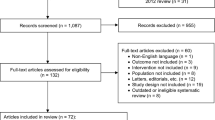Abstract
Oxybutynin chloride has been effectively used for treating overactive bladder syndrome for more than three decades. The evolution of different delivery systems led first to intravesical administration, anal suppositories, and then to the commercial development of an extended-release oral formulation of oxybutynin chloride to improve its tolerability while maintaining efficacy. These modes of delivery were associated with decreased antimuscarinic side effects and N-desethyloxybutynin serum levels by avoiding first-pass metabolism in the upper gut and liver. The development of transdermal delivery has carried this evolution even further, with serum levels of desethyloxybutynin ≤ oxybutynin and dry mouth rates of 7%, with little constipation. The new development of a transdermal oxybutynin gel has decreased these application site reactions to low levels while maintaining good efficacy.
Similar content being viewed by others
References and Recommended Reading
Brendler CB, Radebaugh LC, Mohler JL: Topical oxybutynin chloride for relaxation of dysfunctional bladders. J Urol 1989, 141:1350–1352.
Massad CA, Kogan BA, Trigo-Rocha FE: The pharmacokinetics of intravesical and oral oxybutynin chloride. J Urol 1992, 148:595–597.
Appell RA, Chancellor MB, Zobrist RH, et al.: Pharmacokinetics, metabolism, and saliva output during transdermal and extended-release oral oxybutynin administration in healthy subjects. Mayo Clin Proc 2003, 78:696–702.
Winkler HA, Sand PK: Treatment of detrusor instability with oxybutynin rectal suppositories. Int Urogynecol J Pelvic Floor Dysfunct 1998, 9:100–102.
Sathyan G, Chancellor MB, Gupta SK: Effect of OROS controlled-release delivery on the pharmacokinetics and pharmacodynamics of oxybutynin chloride. Br J Clin Pharmacol 2001, 52:409–417.
Gleason DM, Susset J, White C, et al.: Evaluation of a new once-daily formulation of oxybutynin for treatment of urinary urge incontinence. Urology 1999, 54:420–423.
Dmochowski RR, Davila GW, Zinner NR, et al.: Efficacy and safety of transdermal oxybutynin in patients with urge and mixed urinary incontinence. J Urol 2002, 168:580–586.
Davila GW, Daugherty CA, Sanders SW; the Transdermal Oxybutynin Study Group: A short-term, multicenter, randomized double-blind dose titration study of the efficacy and anticholinergic side effects of transdermal compared to immediate release oral oxybutynin treatment of patients with urge urinary incontinence. J Urol 2001, 166:140–145.
Dmochowski RR, Nitti V, Staskin D, et al.: Transdermal oxybutynin in the treatment of adults with overactive bladder: combined results of two randomized clinical trials. World J Urol 2005, 23:263–271.
Sand P, Zinner N, Newman D, et al.: Oxybutynin transdermal system improves the quality of life in adults with overactive bladder: a multicentre, community-based, randomized study. BJU Int 2007, 99:836–844.
Sand PK, Goldberg RP, Dmochowski RR, et al.: The impact of the overactive bladder syndrome on sexual function: a preliminary report from the multicenter assessment of transdermal therapy in overactive bladder with oxybutynin trial. Am J Obstet Gynecol 2006, 195:1730–1735.
Pizzi LT, Talati A, Gemmen E, et al.: Impact of transdermal oxybutynin on work productivity in patients with overactive bladder: results from the MATRIX study. Pharmacoeconomics 2009, 27:329–339.
Caramelli KE, Staskin DR, Volinn W: Steady-state pharmacokinetics of an investigational oxybutynin topical gel in comparison with oxybutynin transdermal system [abstract 1508]. Poster presented at the Annual Meeting of the American Urological Association. Orlando, FL; May 17–22, 2008.
Staskin DR, Dmochowski RR, Sand PK, et al.: Efficacy and safety of oxybutynin chloride topical gel for treatment of adults with overactive bladder: a randomized, double-blind, placebo-controlled, multicenter study. J Urol 2009, 181:1764–1772.
Dmochowski RR, Sand PK, Zinner NR, et al.: Comparative efficacy and safety of transdermal oxybutynin and oral tolterodine versus placebo in previously treated patients with urge and mixed urinary incontinence. Urology 2003, 62:237–242.
Caramelli KE, Stanworth S, Volinn W, Hoel G: Pharmacokinetics of oxybutynin topical gel: effects of showering, sunscreen application, and person-to-person transference. Poster presented at the Annual Meeting of the American College of Clinical Pharmacy. Louisville, KY; October 19–22, 2008.
Caramelli KE, Thomas H, Stanworth S, Hoel G: Steadystate bioavailability of oxybutynin topical gel at 3 different application sites. Poster presented at the Annual Meeting of the American Society of Consultant Pharmacists. New Orleans, LA; November 19–22, 2008.
Author information
Authors and Affiliations
Corresponding author
Rights and permissions
About this article
Cite this article
Sand, P.K. The evolution of transdermal therapy for overactive bladder. Curr Urol Rep 10, 338–341 (2009). https://doi.org/10.1007/s11934-009-0053-4
Published:
Issue Date:
DOI: https://doi.org/10.1007/s11934-009-0053-4



